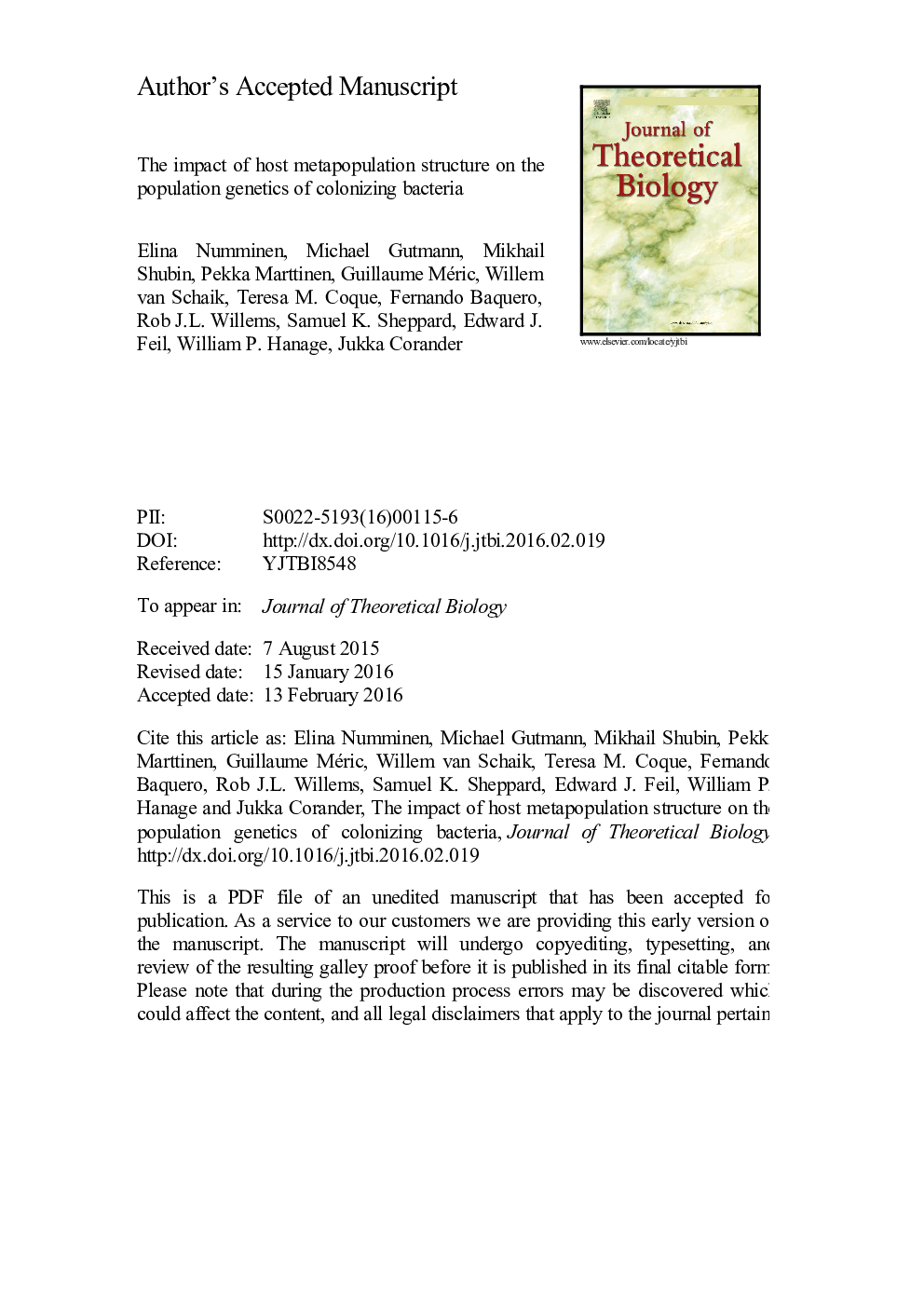| Article ID | Journal | Published Year | Pages | File Type |
|---|---|---|---|---|
| 6369292 | Journal of Theoretical Biology | 2016 | 20 Pages |
Abstract
Many key bacterial pathogens are frequently carried asymptomatically, and the emergence and spread of these opportunistic pathogens can be driven, or mitigated, via demographic changes within the host population. These inter-host transmission dynamics combine with basic evolutionary parameters such as rates of mutation and recombination, population size and selection, to shape the genetic diversity within bacterial populations. Whilst many studies have focused on how molecular processes underpin bacterial population structure, the impact of host migration and the connectivity of the local populations has received far less attention. A stochastic neutral model incorporating heightened local transmission has been previously shown to fit closely with genetic data for several bacterial species. However, this model did not incorporate transmission limiting population stratification, nor the possibility of migration of strains between subpopulations, which we address here by presenting an extended model. We study the consequences of migration in terms of shared genetic variation and show by simulation that the previously used summary statistic, the allelic mismatch distribution, can be insensitive to even large changes in microepidemic and migration rates. Using likelihood-free inference with genotype network topological summaries we fit a simpler model to commensal and hospital samples from the common nosocomial pathogens Staphylococcus aureus, Staphylococcus epidermidis, Enterococcus faecalis and Enterococcus faecium. Only the hospital data for E. faecium display clearly marked deviations from the model predictions which may be attributable to its adaptation to the hospital environment.
Related Topics
Life Sciences
Agricultural and Biological Sciences
Agricultural and Biological Sciences (General)
Authors
Elina Numminen, Michael Gutmann, Mikhail Shubin, Pekka Marttinen, Guillaume Méric, Willem van Schaik, Teresa M. Coque, Fernando Baquero, Rob J.L. Willems, Samuel K. Sheppard, Edward J. Feil, William P. Hanage, Jukka Corander,
